-
 Bitcoin
Bitcoin $84,865.3839
2.05% -
 Ethereum
Ethereum $1,616.0114
4.04% -
 Tether USDt
Tether USDt $0.9994
-0.01% -
 XRP
XRP $2.1423
6.34% -
 BNB
BNB $594.0379
1.46% -
 Solana
Solana $132.2593
9.69% -
 USDC
USDC $1.0000
0.01% -
 Dogecoin
Dogecoin $0.1658
4.64% -
 TRON
TRON $0.2461
1.69% -
 Cardano
Cardano $0.6506
4.95% -
 UNUS SED LEO
UNUS SED LEO $9.3583
0.24% -
 Chainlink
Chainlink $13.0394
3.88% -
 Avalanche
Avalanche $20.3082
7.05% -
 Sui
Sui $2.3372
7.35% -
 Stellar
Stellar $0.2433
4.36% -
 Hedera
Hedera $0.1739
4.40% -
 Shiba Inu
Shiba Inu $0.0...01245
2.46% -
 Toncoin
Toncoin $2.9189
3.03% -
 Bitcoin Cash
Bitcoin Cash $338.8521
8.29% -
 MANTRA
MANTRA $6.2872
-1.96% -
 Litecoin
Litecoin $77.9259
3.31% -
 Polkadot
Polkadot $3.6778
3.78% -
 Hyperliquid
Hyperliquid $16.1874
4.95% -
 Dai
Dai $0.9999
0.00% -
 Bitget Token
Bitget Token $4.3878
1.34% -
 Pi
Pi $0.7465
15.94% -
 Ethena USDe
Ethena USDe $0.9990
0.03% -
 Monero
Monero $210.7702
0.81% -
 Uniswap
Uniswap $5.4189
4.80% -
 OKB
OKB $54.7183
3.30%
What is leveraged mining? How is risk-return calculated?
Leveraged mining uses borrowed funds to boost mining capacity, offering high returns but also high risks; miners must calculate returns and assess risks carefully.
Apr 11, 2025 at 04:07 pm
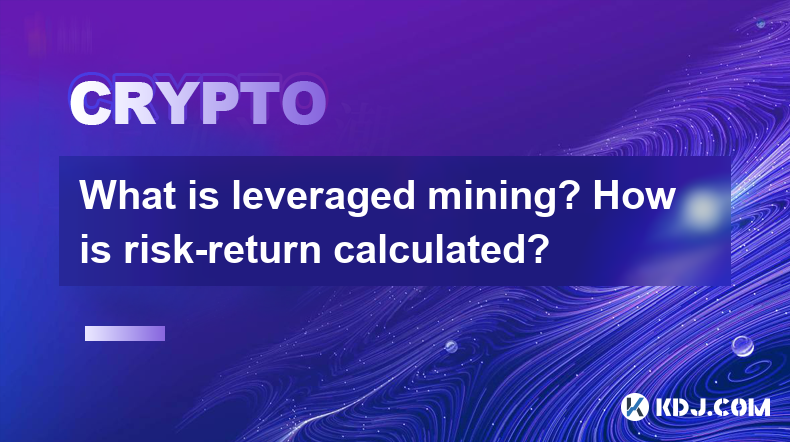
What is Leveraged Mining? How is Risk-Return Calculated?
Leveraged mining is a strategy used in the cryptocurrency space where miners borrow funds to increase their mining capacity and potential returns. This approach can amplify both profits and losses, making it a high-risk, high-reward endeavor. Understanding how to calculate the risk and return associated with leveraged mining is crucial for any miner considering this method.
Understanding Leveraged Mining
Leveraged mining involves using borrowed capital to purchase additional mining hardware or to cover operational costs. By doing so, miners can increase their hash rate and potentially mine more cryptocurrency than they could with their own resources alone. The borrowed funds are typically obtained through loans or by using existing cryptocurrency as collateral.
The primary advantage of leveraged mining is the potential for higher returns. If the value of the mined cryptocurrency rises, the profits can be significant. However, the downside is equally pronounced; if the cryptocurrency's value falls or if operational costs exceed the revenue, the miner may face substantial losses.
Calculating Returns in Leveraged Mining
To calculate the potential returns in leveraged mining, miners need to consider several factors:
- Hash Rate Increase: The additional hash rate obtained through the borrowed funds directly impacts the amount of cryptocurrency mined.
- Mining Revenue: This is the total value of the cryptocurrency mined over a given period.
- Operational Costs: These include electricity, maintenance, and loan interest.
- Cryptocurrency Value: The price at which the mined cryptocurrency can be sold.
The formula for calculating returns can be simplified as:
[ \text{Returns} = \text{Mining Revenue} - \text{Operational Costs} - \text{Loan Repayment} ]
For example, if a miner borrows funds to purchase additional mining rigs, increasing their hash rate from 100 TH/s to 150 TH/s, and they mine 10 BTC in a month with a total operational cost of $5,000 and a loan repayment of $2,000, the returns would be calculated as follows:
- Mining Revenue: 10 BTC * $30,000/BTC = $300,000
- Operational Costs: $5,000
- Loan Repayment: $2,000
[ \text{Returns} = $300,000 - $5,000 - $2,000 = $293,000 ]
Assessing Risks in Leveraged Mining
The risks associated with leveraged mining are significant and must be carefully evaluated. Key risks include:
- Market Volatility: The value of the mined cryptocurrency can fluctuate widely, affecting the miner's revenue.
- Interest Rates: The cost of borrowing can increase, making the loan more expensive.
- Operational Failures: Equipment breakdowns or power outages can halt mining operations, leading to losses.
- Liquidation Risk: If the value of the collateral (often the miner's existing cryptocurrency holdings) falls below a certain threshold, the lender may liquidate the collateral, resulting in a total loss for the miner.
To assess these risks, miners can use various metrics and models:
- Break-even Analysis: Determining the point at which mining revenue equals total costs, including loan repayments.
- Value-at-Risk (VaR): A statistical measure that quantifies the potential loss in value of a risky asset or portfolio over a defined period for a given confidence interval.
- Stress Testing: Simulating various scenarios to see how the mining operation would perform under adverse conditions.
Implementing Leveraged Mining: A Step-by-Step Guide
For those interested in implementing leveraged mining, here is a detailed guide on how to proceed:
- Research Lenders: Identify lenders that offer cryptocurrency loans with favorable terms. Some popular platforms include BlockFi, Celsius, and Nexo.
- Calculate Borrowing Needs: Determine how much capital is needed to purchase additional mining hardware or cover operational costs.
- Assess Collateral: Decide what cryptocurrency assets will be used as collateral for the loan.
- Apply for the Loan: Submit an application to the chosen lender, providing all necessary documentation and collateral.
- Purchase Mining Equipment: Use the borrowed funds to buy additional mining rigs or pay for operational expenses.
- Set Up Mining Operations: Install and configure the new mining equipment, ensuring it is integrated into the existing mining setup.
- Monitor and Adjust: Regularly monitor the performance of the mining operation and the value of the mined cryptocurrency. Adjust strategies as needed to manage risks and maximize returns.
Case Studies of Leveraged Mining
Examining real-world examples can provide valuable insights into the practical application of leveraged mining:
- Case Study 1: A miner in Texas borrowed $500,000 to expand their mining operation. They increased their hash rate by 50% and managed to mine an additional 5 BTC per month. However, a sudden drop in Bitcoin's value led to a temporary halt in operations, and the miner struggled to repay the loan.
- Case Study 2: A group of miners in Canada used leveraged mining to capitalize on a bullish market. They borrowed funds to purchase state-of-the-art mining rigs and saw their profits soar as the value of the mined cryptocurrency increased. They successfully repaid the loan and continued to benefit from their expanded operations.
Tools and Resources for Leveraged Mining
Several tools and resources can assist miners in managing their leveraged mining operations:
- Mining Calculators: Online calculators like those provided by Coinwarz or WhatToMine help miners estimate their potential returns based on various inputs such as hash rate, electricity costs, and cryptocurrency prices.
- Risk Management Software: Platforms like CryptoQuant offer tools for tracking market trends and assessing risks associated with cryptocurrency investments.
- Financial Planning Tools: Software like Excel or Google Sheets can be used to model different scenarios and calculate break-even points and potential returns.
Frequently Asked Questions
Q: What are the most common types of collateral used in leveraged mining?
A: The most common types of collateral used in leveraged mining are existing cryptocurrency holdings, such as Bitcoin or Ethereum. Some lenders may also accept other digital assets or even mining equipment as collateral.
Q: How can miners mitigate the risks associated with leveraged mining?
A: Miners can mitigate risks by diversifying their mining operations, closely monitoring market trends, maintaining a cash reserve for unexpected expenses, and choosing lenders with flexible repayment terms.
Q: Are there any regulatory considerations for leveraged mining?
A: Regulatory considerations for leveraged mining vary by jurisdiction. Miners should be aware of local laws regarding cryptocurrency lending, borrowing, and mining operations. It's advisable to consult with a legal expert to ensure compliance with all relevant regulations.
Q: Can leveraged mining be done with altcoins, or is it limited to major cryptocurrencies like Bitcoin?
A: Leveraged mining can be done with altcoins, but it is more commonly associated with major cryptocurrencies like Bitcoin due to their higher liquidity and stability. However, miners can explore opportunities with altcoins if they are willing to accept the additional risks associated with less established cryptocurrencies.
Disclaimer:info@kdj.com
The information provided is not trading advice. kdj.com does not assume any responsibility for any investments made based on the information provided in this article. Cryptocurrencies are highly volatile and it is highly recommended that you invest with caution after thorough research!
If you believe that the content used on this website infringes your copyright, please contact us immediately (info@kdj.com) and we will delete it promptly.
- As Traditional Finance Embraces Blockchain, FloppyPepe (FPPE) Presale Stands Out as the High-Risk/High-Reward Opportunity
- 2025-04-13 11:10:12
- Bitcoin (BTC) Realized Loss Metric Shows Early Signs of Seller Exhaustion
- 2025-04-13 11:10:12
- BitMEX Co-Founder Arthur Hayes Predicts Bitcoin (BTC) Could Skyrocket to $250,000 by the End of 2025
- 2025-04-13 11:05:14
- Solana (SOL) Price Prediction: SOL Remains a Core Asset Despite Recent Market Volatility
- 2025-04-13 11:05:14
- Taiwanese Authorities Charge 4 Executives of Steaker Platform for Allegedly Raising NT$1.48 Billion Through Unauthorized Cryptocurrency Investment Schemes
- 2025-04-13 11:05:12
- BitMEX co-founder Arthur Hayes believes one catalyst could suddenly send Bitcoin (BTC) to new all-time highs
- 2025-04-13 11:05:12
Related knowledge

What is impermanent loss insurance? What are the solutions?
Apr 12,2025 at 01:14am
What is Impermanent Loss Insurance? What are the Solutions? Impermanent loss is a significant concern for liquidity providers in decentralized finance (DeFi) platforms. It occurs when the price of tokens in a liquidity pool changes compared to when they were deposited, leading to a potential loss if the provider decides to withdraw their liquidity. To m...
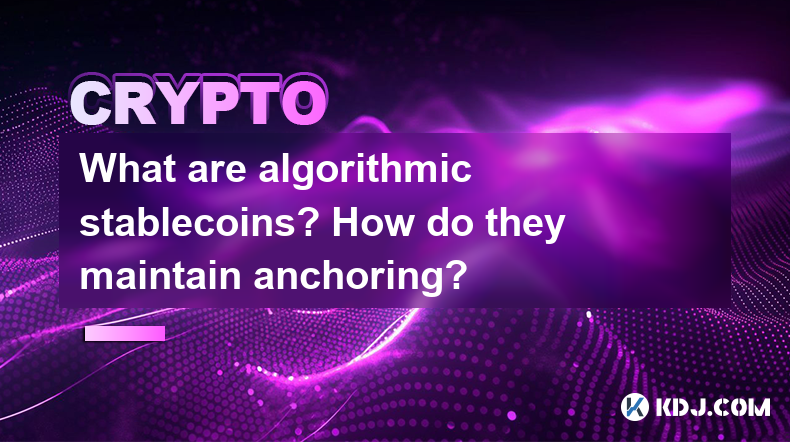
What are algorithmic stablecoins? How do they maintain anchoring?
Apr 12,2025 at 11:35am
Algorithmic stablecoins represent a fascinating and innovative segment within the cryptocurrency ecosystem. These digital assets are designed to maintain a stable value, typically pegged to a fiat currency like the US dollar, through the use of algorithms rather than traditional collateral. This approach distinguishes them from other types of stablecoin...

What is leveraged mining? How is risk-return calculated?
Apr 11,2025 at 04:07pm
What is Leveraged Mining? How is Risk-Return Calculated? Leveraged mining is a strategy used in the cryptocurrency space where miners borrow funds to increase their mining capacity and potential returns. This approach can amplify both profits and losses, making it a high-risk, high-reward endeavor. Understanding how to calculate the risk and return asso...
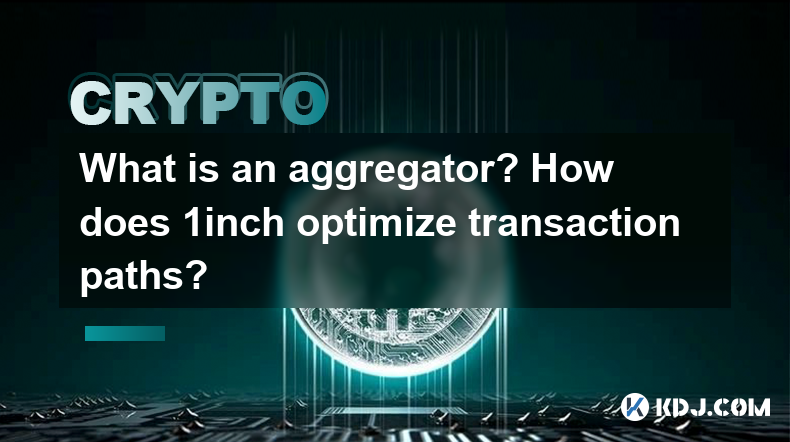
What is an aggregator? How does 1inch optimize transaction paths?
Apr 12,2025 at 05:00pm
An aggregator in the cryptocurrency space is a tool that compiles and compares data from multiple decentralized exchanges (DEXs) to find the best possible trading routes and prices for users. Aggregators are essential for traders looking to optimize their transactions, as they can automatically search through various liquidity sources to ensure the most...
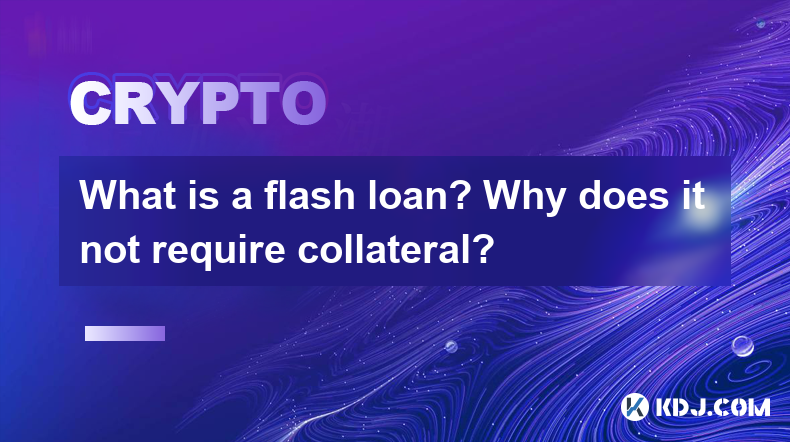
What is a flash loan? Why does it not require collateral?
Apr 11,2025 at 12:57pm
A flash loan is a type of loan that is unique to the decentralized finance (DeFi) ecosystem. It allows borrowers to take out a loan without the need for collateral, and the loan must be repaid within the same transaction. This type of loan is facilitated by smart contracts on blockchain platforms, most commonly on the Ethereum network. The concept of a ...
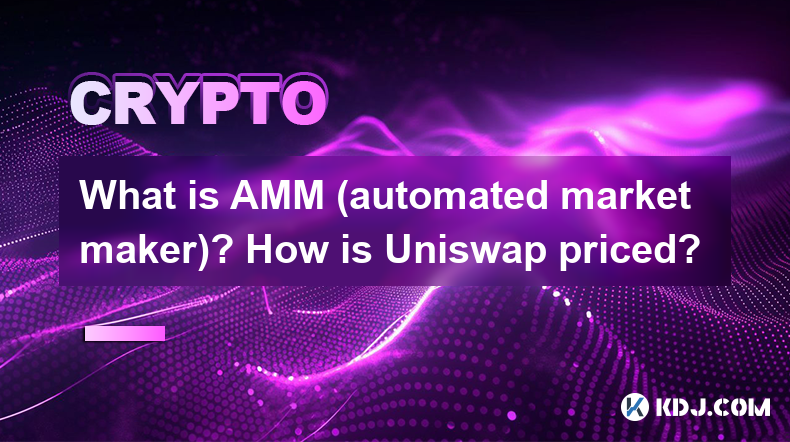
What is AMM (automated market maker)? How is Uniswap priced?
Apr 11,2025 at 06:57pm
What is AMM (Automated Market Maker)? How is Uniswap Priced? Automated Market Makers (AMMs) are a type of decentralized exchange protocol that use algorithms to price assets instead of traditional order books. The most well-known AMM is Uniswap, which has become a cornerstone of the decentralized finance (DeFi) ecosystem. This article will delve into th...

What is impermanent loss insurance? What are the solutions?
Apr 12,2025 at 01:14am
What is Impermanent Loss Insurance? What are the Solutions? Impermanent loss is a significant concern for liquidity providers in decentralized finance (DeFi) platforms. It occurs when the price of tokens in a liquidity pool changes compared to when they were deposited, leading to a potential loss if the provider decides to withdraw their liquidity. To m...

What are algorithmic stablecoins? How do they maintain anchoring?
Apr 12,2025 at 11:35am
Algorithmic stablecoins represent a fascinating and innovative segment within the cryptocurrency ecosystem. These digital assets are designed to maintain a stable value, typically pegged to a fiat currency like the US dollar, through the use of algorithms rather than traditional collateral. This approach distinguishes them from other types of stablecoin...

What is leveraged mining? How is risk-return calculated?
Apr 11,2025 at 04:07pm
What is Leveraged Mining? How is Risk-Return Calculated? Leveraged mining is a strategy used in the cryptocurrency space where miners borrow funds to increase their mining capacity and potential returns. This approach can amplify both profits and losses, making it a high-risk, high-reward endeavor. Understanding how to calculate the risk and return asso...

What is an aggregator? How does 1inch optimize transaction paths?
Apr 12,2025 at 05:00pm
An aggregator in the cryptocurrency space is a tool that compiles and compares data from multiple decentralized exchanges (DEXs) to find the best possible trading routes and prices for users. Aggregators are essential for traders looking to optimize their transactions, as they can automatically search through various liquidity sources to ensure the most...

What is a flash loan? Why does it not require collateral?
Apr 11,2025 at 12:57pm
A flash loan is a type of loan that is unique to the decentralized finance (DeFi) ecosystem. It allows borrowers to take out a loan without the need for collateral, and the loan must be repaid within the same transaction. This type of loan is facilitated by smart contracts on blockchain platforms, most commonly on the Ethereum network. The concept of a ...

What is AMM (automated market maker)? How is Uniswap priced?
Apr 11,2025 at 06:57pm
What is AMM (Automated Market Maker)? How is Uniswap Priced? Automated Market Makers (AMMs) are a type of decentralized exchange protocol that use algorithms to price assets instead of traditional order books. The most well-known AMM is Uniswap, which has become a cornerstone of the decentralized finance (DeFi) ecosystem. This article will delve into th...
See all articles























































































